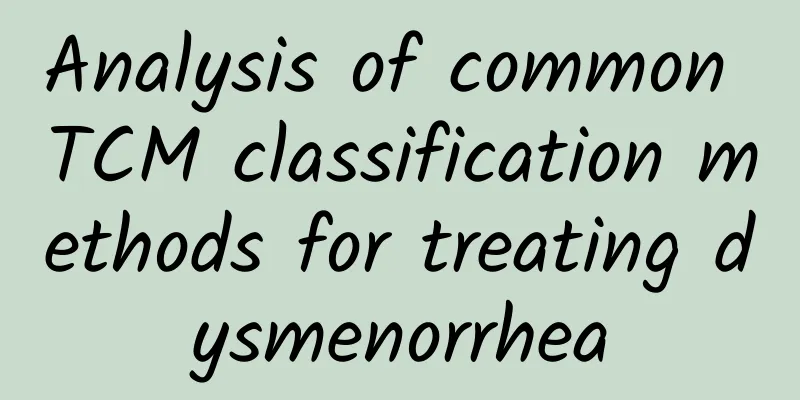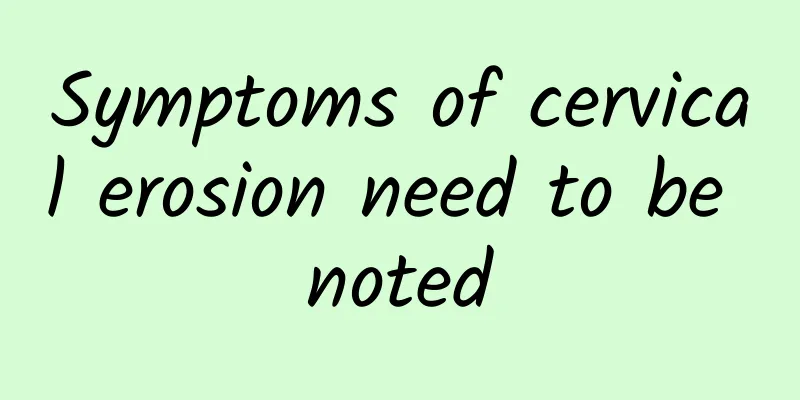Analysis of common TCM classification methods for treating dysmenorrhea

|
In clinical practice, Chinese medicine divides dysmenorrhea into four categories according to different dysmenorrhea symptoms, and it is a very effective method to treat dysmenorrhea . So what are the methods of Chinese medicine for treating dysmenorrhea by classification? Here we will tell you about the common methods of Chinese medicine for treating dysmenorrhea by classification. Generally, the common TCM classification methods for treating dysmenorrhea are: 1. Qi stagnation and blood stasis: abdominal distension and pain, nipple tenderness, irritability, scanty menstruation or menstrual irregularities before or during menstruation. When treating dysmenorrhea, you should take medicines that soothe the liver and regulate qi, dissipate blood stasis and relieve pain. For food treatment of dysmenorrhea, you can use boiled eggs with motherwort. 2. Qi and blood deficiency: continuous abdominal pain during menstruation, scanty menstruation, light and thin menstruation, fatigue, sallow complexion, poor appetite, loose stools, etc. When treating dysmenorrhea, you should take medicines that have the effects of replenishing qi, blood and relieving pain, and you can also eat more mutton. 3. Yang deficiency and internal cold: cold pain in the lower abdomen during or after menstruation, light menstruation and less amount, accompanied by sore waist and weak legs, cold hands and feet, clear and long urine, etc. When treating dysmenorrhea, you should take medicines that have the effects of warming the meridians and dispelling cold, nourishing blood and relieving pain. For example, brown sugar ginger soup is very effective in treating dysmenorrhea. Brown sugar has the effects of nourishing blood, dispersing stasis, warming the liver, and dispelling cold, while ginger has the effects of nourishing the middle and dispelling cold and treating dysmenorrhea. The two medicines can be used together to nourish qi and blood, warm the meridians and activate blood circulation. 4. Liver and kidney deficiency: 1-2 days after the menstruation is over, there will be backache, weak legs, dull pain in the lower abdomen, or hot flashes, dizziness, tinnitus, etc. When treating dysmenorrhea, you should take drugs that have the effects of nourishing the kidneys, nourishing the liver and relieving pain. The above is an introduction to the methods of treating dysmenorrhea according to TCM classification. I hope it will be helpful to everyone. Patients should choose the method of treating dysmenorrhea that suits them according to their actual condition and should not choose blindly. |
<<: Experts explain the precautions before ectopic pregnancy surgery
>>: Experts explain two common causes of dysmenorrhea
Recommend
What to do with irregular menstruation? 3 common dietary conditioning methods for irregular menstruation
Irregular menstruation is a common disease among ...
Use "adiponectin" to make weight loss easier. Make good use of "soy dregs powder" to supplement slimming hormones
Next, I will introduce recipes for mixing drinks,...
What to do if you have stomach pain during menstruation
What should I do if I have stomach pain during me...
How to increase menstrual flow
How to increase menstrual flow? Increasing menstr...
A brief analysis on the prevention of hyperprolactinemia
We need to actively grasp the prevention methods ...
1 bowl of shaved ice = 500 calories. Nutritionists teach you how to eat without gaining weight!
In the hot summer, there is nothing more enjoyabl...
You love to eat tonic food in winter, but can’t get rid of obesity? Pyramid training only takes 10 minutes to burn 100 calories
It’s cold in winter, so I just want to stay in be...
Will there be bleeding after uterine fibroid surgery? What are the hazards of uterine fibroid surgery?
The incidence of submucosal fibroids is relativel...
How to treat cervicitis in women? 4 common methods for women to check cervicitis
The occurrence of cervicitis causes great harm to...
Early symptoms of vulvar leukoplakia
In the early stages of vulvar leukoplakia, sympto...
It is difficult to lose weight in middle age. Telephone consultation can help you lose weight
What should I do if I gain weight in middle age a...
What details should be paid attention to during abortion surgery?
What details should be paid attention to during a...
What is the difference between cervicitis and cervical erosion?
What is the difference between cervicitis and cer...
What causes pelvic inflammatory disease?
Pelvic inflammatory disease is a gynecological di...
Eliminate old waste! 5 Foot Massage Methods to Help You Lose Weight
The biggest obstacles to weight loss are low meta...









